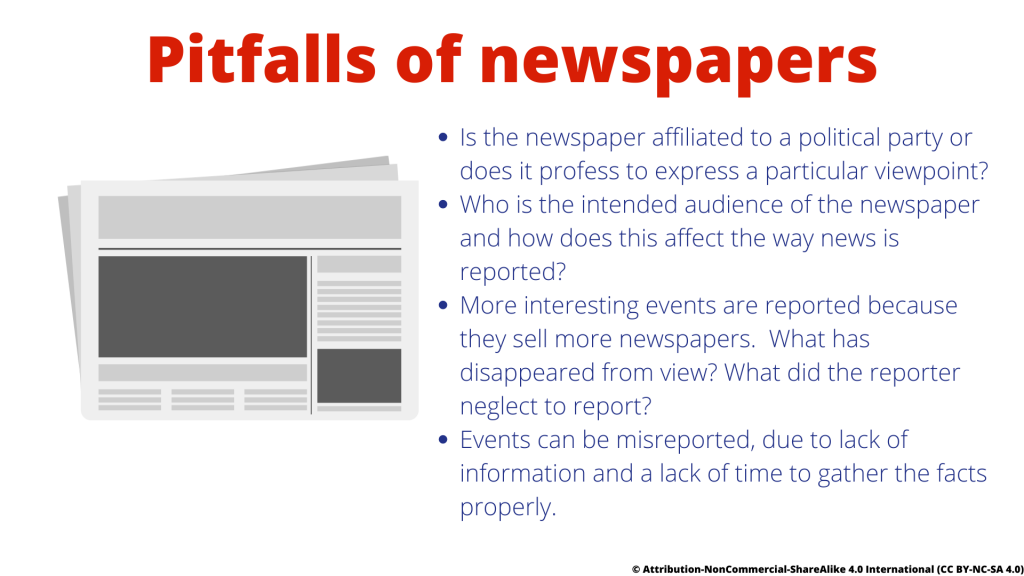How can I use news in my assignments?
News stories can reveal a lot about the past, and the present. For politics, history and sociology students, news stories provide a snapshot of every day life, which can inform theories or arguments. For media, communications and journalism students they provide important insights into the industry.
Nevertheless, there are pitfalls of using newspapers as primary source material which it is important to be aware of. Read this article to find out more.

For other subjects it may not be appropriate to include opinion pieces written by journalists, who are not experts in the given field. For example, health professionals need evidence-based research, not conjecture or stories designed to be emotive; and an archaeologist should use evidence from site reports rather than a local news story which provides the sketchiest of detail.
This is not to say that news should never be read. Instead, news stories can be springboards to important research.
Here are some top tips to choosing new sources:
- Choose new sources that have a history of producing quality editorials and news e.g. The Times or the BBC.
- Check scientific and business stories for evidence of research. Do they include original raw data or research? Do they cite their sources?
 LearningSkillsHub
LearningSkillsHub